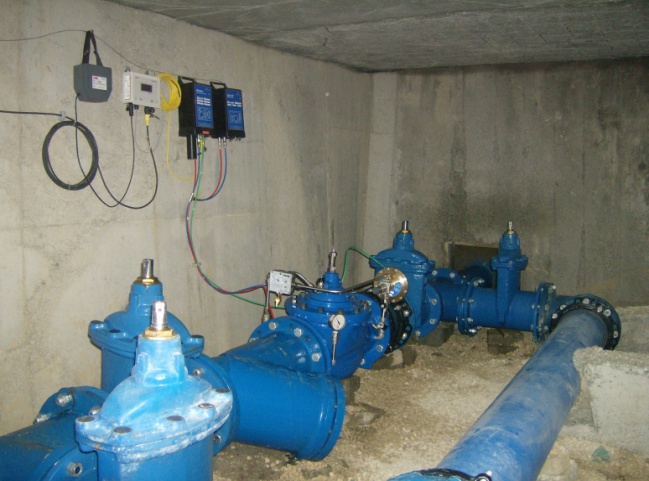Pressure Management
Many water distribution systems experience significant fluctuations in demand throughout the day – peak consumption periods (morning and evening) coupled with off-peak periods of low demand (over night). Some systems may also experience seasonal fluctuations caused by climatic factors.Because of this design methodology, most water distribution systems experience excess pressure during off-peak periods (mostly over night). This is evident from the fact that major breaks tend to occur during the late evening and early morning hours when system pressures are at the highest. Taking into consideration that the rate of leakage in water distribution networks is a function of the pressure applied by pumps or by gravity and water lost through leakage increases with increased pressure, it can therefore be concluded that leakage levels in most systems are higher than they should be most of the time.
Pressure management is one of the fundamental elements of a well-developed leakage management strategy and can be defined as the practice of managing system pressures to the optimum levels of service while ensuring sufficient and efficient supply to legitimate uses.Reducing leakage by lowering pressures is the simplest and most immediate way of reducing water loss and demand in the network with immediate results and immediate monetary savings.
Pressure management helps to reduce all three components of real water losses (background, reported and unreported leakage). Unnecessary or excess pressure is reduced, and strong pressure fluctuations are eliminated. This, in turn, decreases pipe breaks and bursts in water distribution networks and , thus helping to extend the life of the network. Finally, the pressure control has benefits to water utilities, customers and water protection and water recourse savings.

There are a number of methods for reducing pressure in the system, but the most common and cost effective is the automatic pressure reducing valve or PRV. PRVs are instruments that are installed at strategic points in the network to reduce or maintain downstream pressure regardless of the upstream pressure or flow-rate fluctuations. PRVs are usually sited within a DMA, next to the flow meter.
Aquasave is able to offer a comprehensive programme of assessment, design, installation and maintenance:
- An assessment of suitability can be carried out after the completion of both flow and pressure surveys, customer issues, customer types and control limitations. The surveys will then define the potential for pressure management and identify the associated water reductions and financial benefits.
- Identify correct control valves and control devices
- Model correct control regimes to provide desired results
- Analyse the costs and benefits





